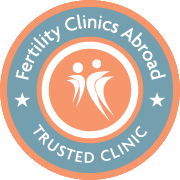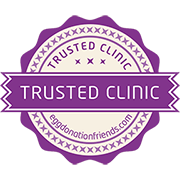Navigating Fertility Choices: Understanding Elective Single Embryo Transfer (eSET)
by Petroula Tatsi, last updated 13 Mar 2024,
5 min read
Embarking on the journey of assisted reproductive technology (ART) can be an overwhelming experience. One crucial aspect of this process is the decision on the number of embryos to transfer during in vitro fertilization. In recent years, there has been a shift towards elective single embryo transfer (eSET) as the preferred method for a safer and effective ART. Numerous international and national organizations endorse this approach to minimize risks and not compromise success rates (De los Santos et al., 2016; ASRM, 2021).
Despite global recommendations, the adoption of eSET varies across countries, highlighting the need for standardized guidelines. The European Society of Human Reproduction and Embryology (ESHRE) has responded to this by developing a comprehensive guideline that evaluates medical and non-medical factors influencing the decision-making process for embryo transfer during IVF. This very recent guideline was published on 14 February 2024.
The ESHRE guideline was meticulously crafted and numerous scientific papers were scrutinized, and evidence was categorized based on strength, with recommendations classified as strong or conditional.
The guideline presents evidence-based recommendations and good practice points in response to key questions. The focus areas include medical risks associated with multiple pregnancies, financial considerations, psychological impacts, and various factors affecting the decision-making process.
Key Questions and Recommendations:
Which pregnancy-related risks and issues should be considered before the transfer of more than one embryo?
1. Medical Risks related to Multiple Pregnancy/Birth:
The guideline strongly recommends informing patients about the elevated risks associated with transferring more than one embryo, such as pregnancy loss, ectopic pregnancy, complications, and neonatal issues. These complications and neonatal issues include pre-eclampsia, gestational diabetes, antepartum and postpartum hemorrhage, Caesarean section, stillbirth, preterm birth, low birthweight, neonatal intensive care admission, and neonatal death associated with multiple pregnancies.
2. Financial Issues of Multiple Pregnancy/Birth:
Considering the increased direct and indirect costs of multiple pregnancies, healthcare professionals are advised to discuss cost-related information with patients during treatment planning.
3. Psychological Issues of Multiple Pregnancy/Birth:
Clinicians should consider potential psychological complications and provide information to patients during the treatment planning stage. Psychological complications refer to mental health postpartum, emotional distress, and possible marital problems, as well as the influence of personality characteristics, sociodemographic factors, and family functioning, on the mental health of parents and offspring.
Which personal, regulatory, and reimbursement factors are expected to affect the decision for the number of embryos to transfer?
Social, Legislative, and Economic Factors: The guideline encourages policies promoting the practice of eSET, emphasizing the impact of patient preferences, regulatory factors, and reimbursement policies on embryo transfer practices.
Which clinical criteria should be considered as factors when deciding to apply DET (double embryo transfer) instead of eSET for couples/individuals undergoing IVF?
Factors such as previous unsuccessful ART treatments, duration of infertility, previous pregnancies, female age, ovarian response, endometrial characteristics, and the use of donor oocytes, donated embryos influence the decision to perform double embryo transfer (DET) instead of eSET. Moreover, the rate of ectopic pregnancy is higher after the transfer of two versus one embryo, regardless of development stage or freezing status.
Which embryo-related criteria should be considered as factors in deciding to apply DET instead of eSET for couples/individuals undergoing IVF?
The guideline outlines criteria related to fresh and frozen embryo transfer cycles, developmental stage of the embryo (cells stage or blastocyst stage) emphasizing that SET should be applied for blastocyst stage embryotransfers regardless of the quality of the blastocyst and the fresh or frozen state of the embryos. Blastocysts are recommended also to be transferred in a SET because of the higher monozygotic twin potential of blastocysts.
Can time-lapse morphokinetics or preimplantation genetic testing outcomes be considered factors in decising to apply DET instead of eSET for couples/individuals undergoing IVF?
Time-lapse imaging and preimplantation genetic testing outcomes should not be sole factors in deciding between DET and eSET. For PGT specifically the current practice involves SET.

In any patient undergoing IVF, should the transfer of more than two embryos be applied considering the risks of the higher order pregnancies?
The guideline strongly discourages the transfer of more than two embryos due to associated risks.
In any patient undergoing IVF, should the transfer of more than two embryos with embryo reduction after implantation be applied considering the risks of the procedure?
While foetal reduction may be considered in higher-order multiples, the guideline strongly recommends against transferring more than two embryos with foetal reduction after multiple embryo implantation.
Which issues are crucial for decision-making regarding the number of embryos to transfer and how should they be discussed with the patients?
The guideline emphasizes the importance of discussing medical, economic, social, and psychological consequences of transferring more than one embryo, patient wishes, and science-based recommendations. Patient involvement, particularly of both members of the patient couple, is crucial.
The guideline recognizes the complex nature of patient cases and provides nuanced recommendations based on various prognostic factors.
European Society of Human Reproduction and Embryology strongly advises against DET in certain cases:
-
treatments with donor oocytes,
-
donated embryos,
-
and gestational carriers
noting increased risks of complications.
In addition, eSET is recommended:
-
for women aged less than 38 years old
-
normal responders
-
low or high responders
-
Blastocyst transfer
The decision to perform DET instead of eSET should not be based:
-
on female age,
-
endometrial characteristics,
-
duration of infertility
-
or previous unsuccessful ART treatments.
The guideline advocates eSET as the standard procedure whenever more than one embryo is available. This approach is positioned to maximize the chances of a healthy pregnancy while minimizing the risks associated with multiple pregnancies. Fertility choices are deeply personal, and the ESHRE guideline serves as a valuable source for healthcare professionals and patients navigating the intricate landscape of assisted reproductive technology. For a comprehensive understanding of the recommendations and supporting evidence, the full guideline is available on the ESHRE website.

Petroula Tatsi, BSc, MSc
Petroula is a Clinical Embryologist and a member of the scientific team of Newlife IVF Greece.










